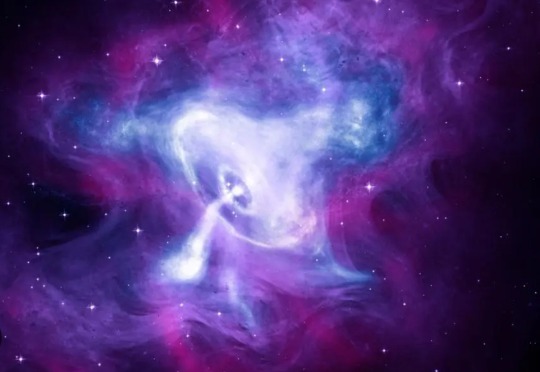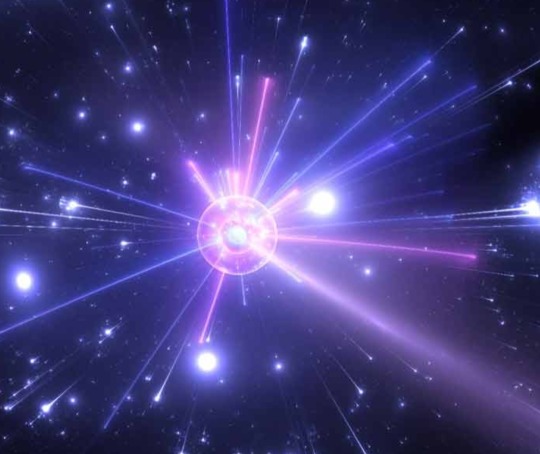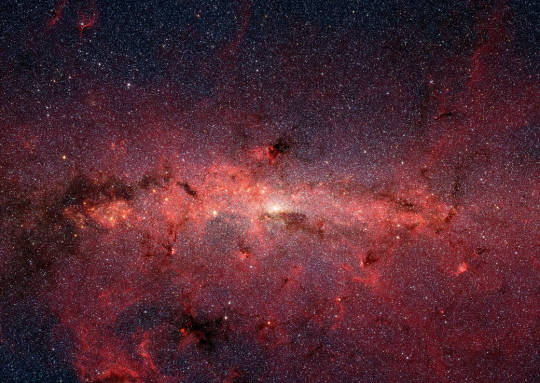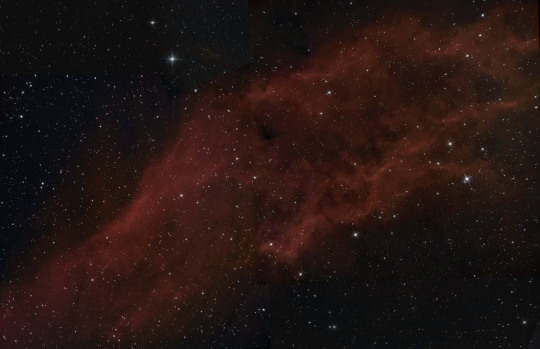#astronomylove
Text
What is the coldest space in the universe. Read here for an answer

🌟 Located a staggering 5,000 light-years away in the captivating Southern constellation of Centaurus, the Boomerang Nebula boasts a chilling temperature of just one degree Kelvin above absolute zero, approximately -460 degrees Fahrenheit. Brrr, it's the epitome of cosmic chill! ❄️🌌
#HubbleTelescope#SpaceWonders#CosmicBeauty#AstronomyLove#StunningUniverse#SpaceExploration#BipolarOutflow#CosmicChill#AstronomyPhotography#SpaceHeroes#DiscoverTheCosmos#CelestialWonders#james webb space telescope#esa#nasa#jwst#webb telescope#webb discoveries
17 notes
·
View notes
Text

*HAPPY CHETRA NAVRATRI*
I hope that this Navratri brings you and your family happiness, prosperity, health, and optimism.
जानिए घटस्थापना कैसे करे .....या फिर लाइफ से जुडी किसी भी समस्या का समाधान पाए | Share your details via whtasapp 92175-80001 contact us for all types of Astrology Consultations.
***** PAID SERVICE *********
Follow Quick Astro and get your consultation from India's best astrologers.
First chat on social media platform is absolutely free.
Facebook : https://www.facebook.com/quickastro/
Instagram : https://www.instagram.com/quickastro/
#astrologypostt#quickastro#astronomy#astrology#astronomylove#navratri2024#MaaShailputri#godess#Kalash#ghatsthapna#chetranavratri#prosperity#love#happiness#wealth#onlineservice#astroremedies#goodvibes#positivity
0 notes
Photo

2019 Astronomy Calendar // Local Adventurer
Discover the wonders of the cosmos with our comprehensive 2019 Astronomy Calendar. Stay tuned for mesmerizing celestial events and stargazing tips.
0 notes
Text
2019 Astronomy Calendar // Local Adventurer

Planning your next stargazing adventure? Our 2019 Astronomy Calendar is here to guide you through the night sky. Explore the universe one constellation at a time.
0 notes
Text

#TelescopePNG#StellarExplorations#UniverseWonders#AstronomyLove#SpaceGraphics#CosmicJourney#ScienceArt#StargazingAdventure#AstroEnthusiast#SpaceExploration#DiscoverTheUniverse#AstronomyInspiration#TelescopeDesign#StellarGraphics#SpaceArtwork
0 notes
Text

Step into the vast expanse of the universe with the mesmerizing 🎆Twinkling Blue Nebula! ✨🌌 Against a black backdrop, this space art piece captures the cosmic beauty of blue and purple hues intertwined with realistic white stars 🌟twinkling through. This nebula is perfect for those who want to 🚀explore the mysteries of deep space and appreciate the awe-inspiring magic of the 🔭night sky. Use it as a space background or let it inspire your next creative project! 🎨
#SpaceArt#CosmicBeauty#NebulaArt#Astronomy#StarrySky#TwinklingNebula#GalaxyArt#SpaceInspiration#DeepSpaceMysteries#CosmicExploration#UniverseWonders#NightSkyMagic#CelestialArt#CosmicWonderland#SpaceVibes#CosmicDreams#AstronomyLove#NebulaObsession#SkyGazing#AweInspiring#StargazingAdventures#SpaceAdventures#AstroPhotography#StarryNight#SpaceCreativity#CosmicJourney#StarlightMagic#ArtAndSpace#SpaceGalaxy#StarLovers
0 notes
Text
Best Telescope: Telescopes For Viewing Beauty of Galaxies

Are you looking for the best telescope to use to observe beautiful galaxies? The telescope is the first necessary tool for admiring the breathtaking beauty of galaxies. An optical tool called a telescope is used to magnify far-off things so they appear closer. It uses a technique for assembling and focusing lenses, curved mirrors, or lenses to create an enlarged image. There are two main categories of things that the majority of people enjoy exploring while thinking about the finest telescopes to observe galaxies. In addition to the Moon, Planets, Comets, and other stars in our Solar System, there are also extrasolar objects (Galaxies, Nebulas, Star Clusters, and Constellations). Choosing the best telescopes to study galaxies can be challenging, particularly if you have no previous astronomical knowledge. The included Equatorial mount enables you to grow with it, ensuring that as you become proficient with astronomy, you never feel confined by the Astronomy Telescope, despite the fact that it has a steeper learning curve for a beginner. Get in contact with us if you're looking for the best telescope because we provide a number of features at a reasonable price.
#professionaltelescope#telescope#astronomical#planetsscopes#astronomylove#astronomy#planets#besttelescopeforviewinggalaxies#astronomytelescopes
1 note
·
View note
Text
HOW IS OUR UNIVERSE EXPANDING??
Blog#308
Saturday, June 24th, 2023
Welcome back,
The universe was born with the Big Bang as an unimaginably hot, dense point. When the universe was just 10-34 of a second or so old — that is, a hundredth of a billionth of a trillionth of a trillionth of a second in age — it experienced an incredible burst of expansion known as inflation, in which space itself expanded faster than the speed of light. During this period, the universe doubled in size at least 90 times, going from subatomic-sized to golf-ball-sized almost instantaneously.

The work that goes into understanding the expanding universe comes from a combination of theoretical physics and direct observations by astronomers. However, in some cases astronomers have not been able to see direct evidence — such as the case of gravitational waves associated with the cosmic microwave background, the leftover radiation from the Big Bang.

A preliminary announcement about finding these waves in 2014 was quickly retracted, after astronomers found the signal detected could be explained by dust in the Milky Way.
According to NASA, after inflation the growth of the universe continued, but at a slower rate. As space expanded, the universe cooled and matter formed. One second after the Big Bang, the universe was filled with neutrons, protons, electrons, anti-electrons, photons and neutrinos.

During the first three minutes of the universe, the light elements were born during a process known as Big Bang nucleosynthesis. Temperatures cooled from 100 nonillion (1032) Kelvin to 1 billion (109) Kelvin, and protons and neutrons collided to make deuterium, an isotope of hydrogen. Most of the deuterium combined to make helium, and trace amounts of lithium were also generated.
For the first 380,000 years or so, the universe was essentially too hot for light to shine, according to France's National Center of Space Research (Centre National d'Etudes Spatiales, or CNES).

he heat of creation smashed atoms together with enough force to break them up into a dense plasma, an opaque soup of protons, neutrons and electrons that scattered light like fog.
Roughly 380,000 years after the Big Bang, matter cooled enough for atoms to form during the era of recombination, resulting in a transparent, electrically neutral gas, according to NASA. This set loose the initial flash of light created during the Big Bang, which is detectable today as cosmic microwave background radiation.

However, after this point, the universe was plunged into darkness, since no stars or any other bright objects had formed yet.
About 400 million years after the Big Bang, the universe began to emerge from the cosmic dark ages during the epoch of reionization. During this time, which lasted more than a half-billion years, clumps of gas collapsed enough to form the first stars and galaxies, whose energetic ultraviolet light ionized and destroyed most of the neutral hydrogen.

Although the expansion of the universe gradually slowed down as the matter in the universe pulled on itself via gravity, about 5 or 6 billion years after the Big Bang, according to NASA, a mysterious force now called dark energy began speeding up the expansion of the universe again, a phenomenon that continues today.
A little after 9 billion years after the Big Bang, our solar system was born.

The Big Bang did not occur as an explosion in the usual way one think about such things, despite one might gather from its name. The universe did not expand into space, as space did not exist before the universe, according to NASA. Instead, it is better to think of the Big Bang as the simultaneous appearance of space everywhere in the universe. The universe has not expanded from any one spot since the Big Bang — rather, space itself has been stretching, and carrying matter with it.
Originally published on space.com
COMING UP!!
(Wednesday, June 28th, 2023)
"IS THE MOON RUSTING??"
184 notes
·
View notes
Text









World's observatories.
#WorldsObservatories#Observatories#Astronomy#Space#Stargazing#Telescope#Science#AstronomicalObservatory#SkyWatch#Astrophotography#Planetarium#Cosmos#Galaxies#Stellar#ScienceAndTechnology#NightSky#Celestial#AstronomyLovers#SciencePhotography#WorldTravel
15 notes
·
View notes
Text

#SolarSystem#Astronomy#SpaceDiagram#CosmicJourney#CelestialBodies#PlanetarySystem#SpaceScience#PlanetaryDiagram#AstronomyLovers#SolarSystemArt#PlanetaryWonders#StellarSystem#CosmicExploration#SpaceEducation#GalacticScience#AstronomyFacts#Universe#SpaceArt#EducationalArt#CelestialVibes#PlanetArt#CosmicBeauty#StellarWonders#SpaceEnthusiast#SolarSystemDiagram
13 notes
·
View notes
Text
"In space, boundaries don't exist, and
the only limit is our imagination. Let every mission be a
new adventure, and every crew a family of stars."
🌠👩🚀🚀
If you want to get this or similar one for yourself -> link
in bio.
These dice are made by the one and only
@baronofdice -
https://baronofdice.com/?ref=DenOfDice 🎯⚔️🎲
#Stargrave#SpaceAdventure#CosmicJourney#GalaxyQuest#AstronautLife#SpaceCrew#SpaceExploration#Interstellar#BeyondTheStars#SciFi#OuterSpace#SpaceMission#SpaceOdyssey#GalacticExploration#StarVoyage#CosmicOdyssey#SpaceTravel#SpaceDiscovery#AstronomyLovers#StellarJourney#UniverseExplorers#frostgrave#nerd#minatures#best4minis
4 notes
·
View notes
Text
What are 100 space facts ?

Read full article here with 100 space facts.
Are you ready to embark on an interstellar adventure? 🚀🌠 We've got a treat for all the space enthusiasts out there! Our latest article is a mind-blowing compilation of 100 Space Facts that will leave you starstruck and craving for more! 🌌💫
From the breathtaking beauty of the Pillars of Creation to the mind-boggling vastness of the universe, we've curated a list that will ignite your cosmic curiosity like never before! 🪐🌟
Discover why the Moon's footprints will last for millions of years, how a teaspoon of neutron star material weighs millions of tons, and so much more! 🌕🌠
👉 Click here read the full article and journey through the wonders of space! 📖🔭✨
Tag a fellow stargazer and let's explore the universe together! 🌌🌠
10 notes
·
View notes
Text

Captura de Cielo Nocturno 🫥✨ wow… Rio Hurtado- Coquimbo.
2 notes
·
View notes
Text

Heartfelt tribute to Bharat Ratna Dr C V Raman, who put the Nation on the world map in the field of science by becoming the first Indian to win the Nobel for Physics in 1930. The Raman Effect will light up the hearts and minds of generations to come.
.
.
#india#nobel#earth#knowledge#facts#astronomy#astronomylover#interstellar#science#space#universe#cosmology#physics#education.#physicist#physicsfacts#sciencefacts#cosmos#astrophysics#spacescience#spaceexploration#quantumphysics#realestate#ashapurna
12 notes
·
View notes
Text

I imaged the California Nebula for 10 hours and this is my result.
#space#astronomy#astrophotography#spaceart#outerspace#spacetravel#spaceexploration#deepspace#astronomylover#spacescience#spaceporn#spacelover
5 notes
·
View notes
Text
Unlock the mysteries of the cosmos! 🌌 Explore the fascinating world of stars, their birth, types, and significance in our galaxy. Get the full guide now! 🔭
Visit us:

1 note
·
View note